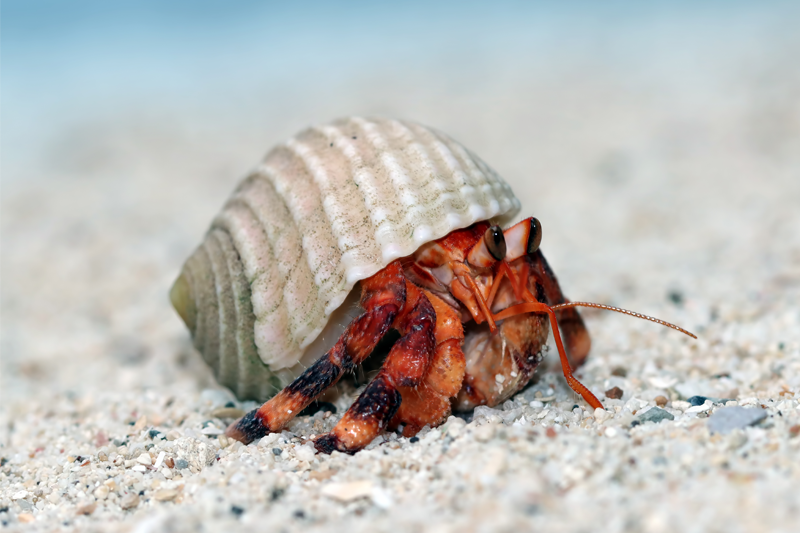- Size: Choose shells that are appropriately sized for your hermit crab, allowing enough room for it to move and turn around comfortably.
- Shape: Select shells with a round opening for easy access and a smooth, symmetrical shape for easy climbing.
- Thickness: Opt for shells that are sturdy and thick enough to offer protection, but not so heavy that the crab struggles to carry it.
- Porosity: Avoid shells with cracks, holes, or other signs of damage that could compromise the shell’s structural integrity.
- Aperture: Look for shells with a well-defined aperture, or opening, that can be closed tightly to protect the crab’s soft abdomen.
- Availability: Choose shells that are readily available and replaceable in case they become damaged or worn over time.
- Variety: Offer your hermit crab a variety of shells to choose from, allowing it to find one that best fits its needs and preferences.
How to Determine the Proper Shell Size for Hermit Crabs
- Measure the crab: Use a ruler or measuring tape to measure the length of the crab’s body, excluding its legs and claws.
- Allow for growth: Choose a shell that is slightly larger than the crab’s current size to allow for growth.
- Check the opening: The shell’s opening should be slightly larger than the crab’s body, but not so large that it can’t be securely closed.
- Test fit: Place the crab into the shell to see if it can move and turn around comfortably. If the shell is too small, the crab will be cramped and unable to close its aperture. If it’s too large, the crab may struggle to carry the shell.
- Offer options: Provide a variety of shells of different sizes so that the crab can choose the one that fits best. Remember, hermit crabs may switch shells as they grow or for other reasons, so it’s important to have a variety of options available.
Should You Buy Painted Shells for Hermit Crabs?
No, it is not recommended to buy painted shells for hermit crabs. Paints and dyes can contain harmful chemicals that can be toxic to the crab and harm its health. In addition, the paint can chip and peel, providing a source of ingested particles that can cause harm to the crab’s digestive system. It’s best to choose natural, unpainted shells that are free from harmful substances and are safe for your hermit crab to use.
